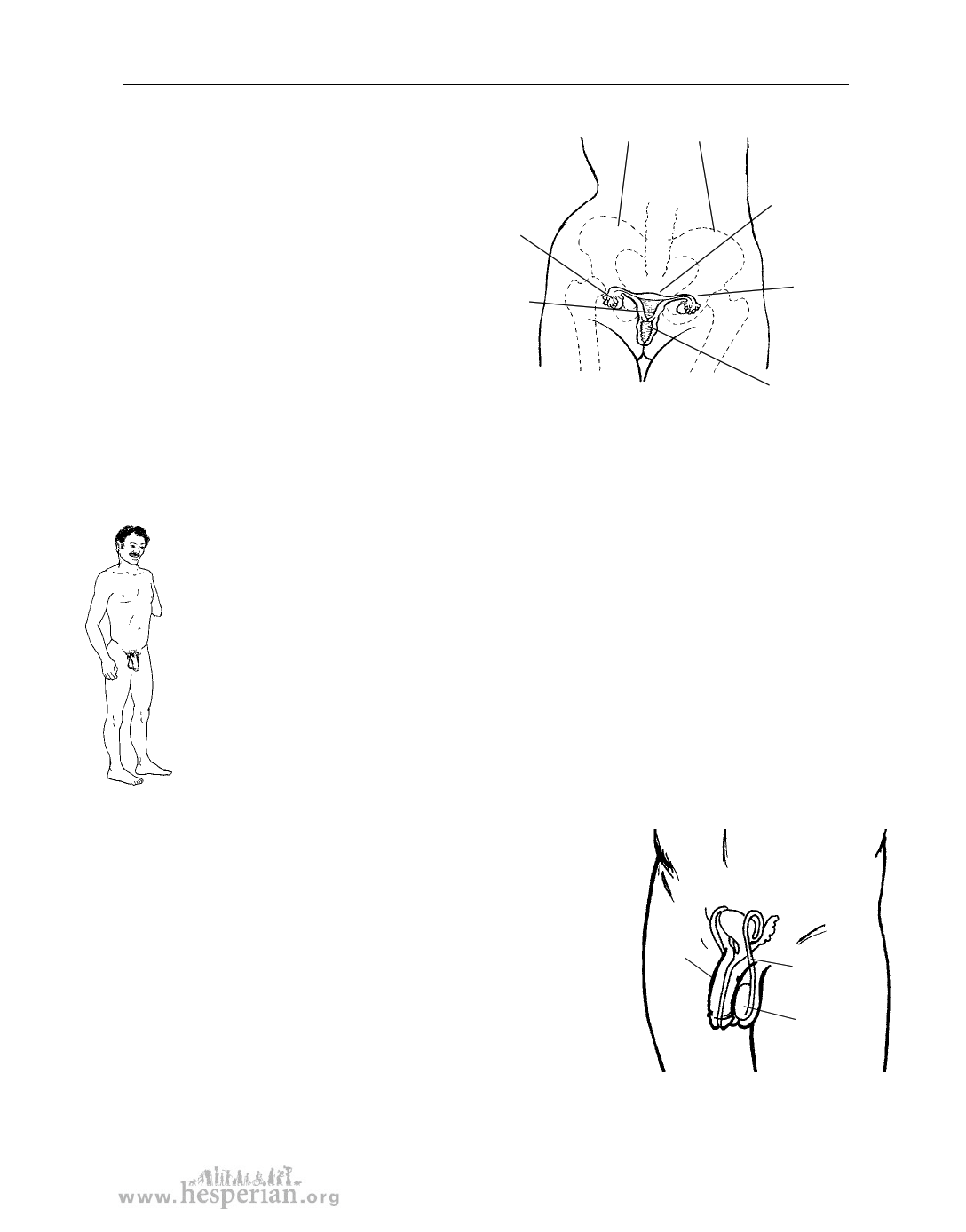
A woman's reproductive system 79
Sexual parts inside a woman’s body
The reproductive parts inside a
woman’s body are in the pelvic
area—the area between the hips. You
can feel your hip bones just below
your waist. If your hip bones are not
shaped evenly, your reproductive
parts will not be affected.
ovary
cervix
hip bones
womb
(uterus)
fallopian
tube
A woman has 2 ovaries, one on
each side of her womb. Each ovary is
about the size of an almond or grape.
One of the ovaries releases an egg
vagina or birth
canal
into one of the fallopian tubes each month. The egg moves through the fallopian
tube to the womb (uterus), a small, hollow muscle that stretches and grows larger
when a woman is pregnant.
A man’s sexual parts
A man’s sexual parts are easier to see than a woman’s because they are
mostly on the outside of his body. The testicles (balls) make the main male
hormone called testosterone. When a boy’s body begins to change, it makes
more testosterone. This causes the changes that make a boy look like a
man. These are like the changes that happen when a girl’s body makes more
female hormones.
The testicles also make a man’s sperm. Sperm travel from the testicles
through a tube into the penis where they mix with a liquid produced by
glands. This mixture of liquid and sperm is called semen.
What happens during sex?
During sex, the man’s semen comes out of his penis when
he ejaculates (comes). Each drop of semen has thousands
of sperm, which are too small to see. When the man
ejaculates in the woman’s vagina or near her genitals, the
sperm can enter the through the ‘mouth’ of the womb
penis
(the cervix) into the womb.
The vagina is made of a special kind of skin that
stretches easily during sex (and also when giving birth).
vas deferens
(sperm tube)
testicle
The vagina makes a fluid or wetness (discharge) that helps
it keep clean and prevent infection. The vagina makes
more fluid than usual during sex to make it easier for the penis to enter, to help
prevent tears in the vagina, and to help sperm reach the womb.
A Health Handbook for Women with Disabilities 2007